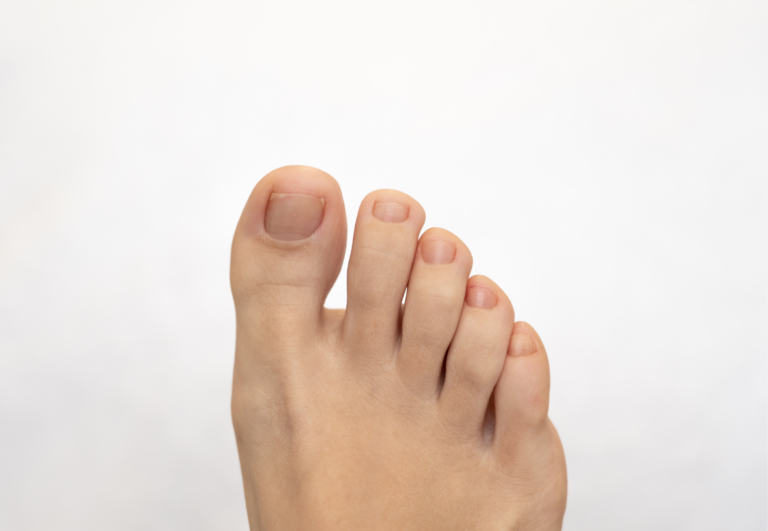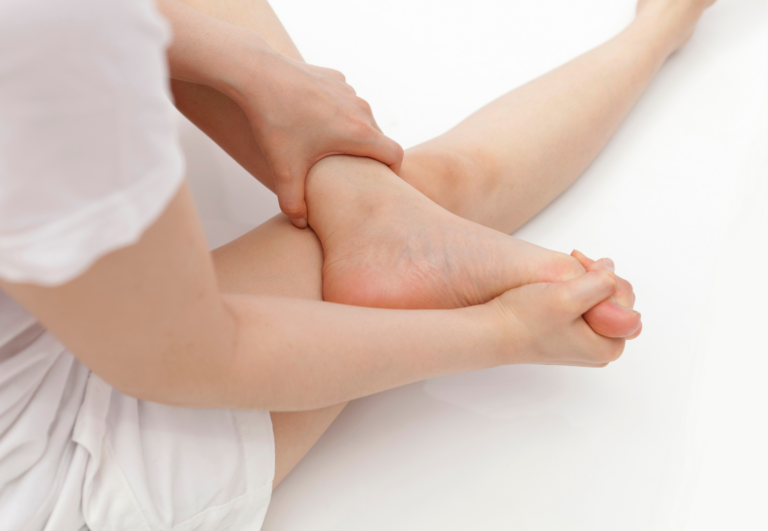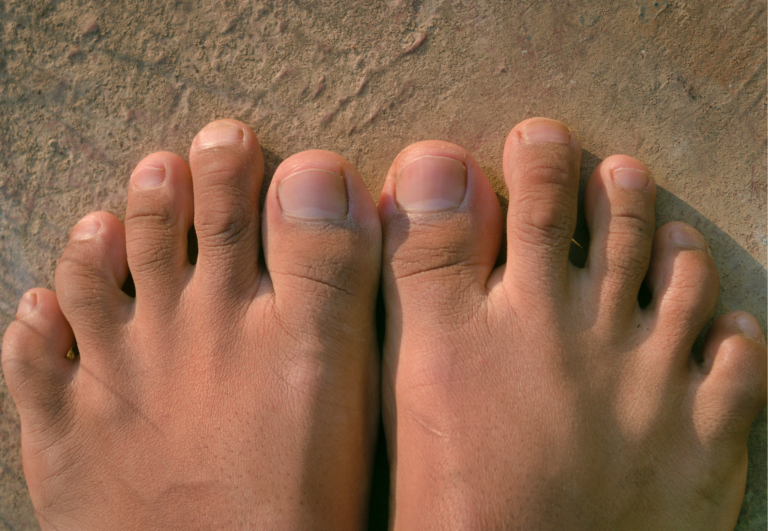How Toe Spacers Can Help with Plantar Fasciitis: Exploring the Benefits
Plantar fasciitis is a common and often persistent kind of repetitive strain injury afflicting runners, walkers, and hikers, and nearly anyone who stands for a living – cashiers, for instance – especially on hard surfaces. Working on concrete and running on pavement are probably risk factors. It causes mainly foot arch pain and/or heel pain.
Morning foot pain is a signature symptom. Plantar fasciitis is not the kind of condition you can power through. About 80% of cases improve significantly within a year, but many people suffer for years, undiagnosed or misdiagnosed, and even get unnecessary surgery. There’s no “cure” for plantar fasciitis, just lots of potentially helpful options for managing it. Rest is the most important one, but many other methods can help, several of them quite a lot: especially simple, cheap, self-managed therapies that you can try safely on your own.
Treatment of plantar fasciitis is like a cocktail: there are lots of possible ingredients, and it’s all about trying them one by one or in combination until relief is felt – a process of trial and error. Every case is different. Toe spacers are one of the ingredients that seem to help some patients.

How Toe Spacers Can Help with Plantar Fasciitis
Toe spacers can be an effective tool in managing and alleviating symptoms of plantar fasciitis, a common condition characterized by pain in the bottom of the foot, especially near the heel. They help by addressing the alignment and functioning of the foot.
Here’s how toe spacers can help with plantar fasciitis:
- Promote proper toe alignment: Proper toe alignment can decrease strain on the plantar fascia, the ligament that becomes inflamed in plantar fasciitis.
- Support the arch: By positioning the toes, toe spacers can aid in maintaining the natural arch of the foot, which can relieve tension on the plantar fascia.
- Improve blood flow: Consistent use of toe spacers can enhance blood flow to the area, which is necessary for healing the plantar fascia.
- Reduce compensatory movements: By encouraging natural foot motion, toe spacers can reduce compensatory movements that might exacerbate plantar fasciitis symptoms.
- Encourage proper weight distribution: With improved toe alignment, weight can be more evenly distributed across the foot, which may alleviate pressure on the plantar fascia.
What Is Plantar Fasciitis?
Plantar fasciitis is characterized by a sharp heel pain, often due to inflammation of the plantar fascia—a band of tissue connecting the heel bone to the toes. This condition is frequently linked to stress placed on the foot muscles, ligaments, and tendons, which can be exacerbated by improper footwear.
Role of Footwear in Foot Health
Wearing shoes that fit poorly or do not provide adequate support can contribute to the development of plantar fasciitis. Footwear plays a pivotal role in foot health, particularly the alignment of toes. Shoes should allow for a natural toe spread to maintain balance and distribute pressure evenly through the foot’s muscles, ligaments, and tendons.
- Preferred Footwear Characteristics:
- Support: Arch support tailored to one’s foot structure
- Fit: Sufficient space for the toes to splay naturally
- Cushioning: Proper cushioning to reduce impact on the heels
Anatomy of the Foot: Muscles, Ligaments, and Tendons
Understanding the interplay between the complex structures of the foot is crucial when addressing plantar fasciitis. The foot’s muscles, ligaments, and tendons work in harmony to support movement. Specifically, the health of the plantar fascia is dependent upon the proper functioning of these components as they absorb impact and stabilize the foot during walking or running.
- Key Foot Components:
- Muscles: Enable movement and support the arches
- Ligaments: Connect bones and maintain alignment
- Tendons: Attach muscles to bones, particularly the Achilles tendon to the heel
By ensuring these structures are properly supported and allowed to function without undue stress, the likelihood of developing conditions like plantar fasciitis can be decreased.
Toe Spacers Explained
Toe spacers are devices designed to improve foot health by realigning the toes to their natural position. This can be particularly beneficial in managing conditions like plantar fasciitis.
Materials and Design of Toe Spacers
Toe spacers are commonly made from materials such as silicone, gel, or foam, which provide flexibility and comfort to the wearer. The design is typically straightforward: toe spacers fit between the toes, keeping them apart to prevent the crowding that often leads to foot conditions.
- Silicone: Durable and hygienic, silicone toe spacers are washable and typically longer-lasting.
- Gel: Softer and more pliable, gel spacers conform well to toe shapes and offer additional cushioning.
- Foam: Lightweight and often less expensive, foam spacers might be less durable but are soft and often hypoallergenic.
Their design may vary from a single spacer that fits between two toes to full-foot versions that separate all the toes.
Different Types and Their Uses
There are various types of toe spacers on the market, each suited for different needs.
- Single-toe spacers: These are small and focus on separating two toes, often used in cases of toe overlap.
- Full-toe separators: They are designed to spread all the toes and are commonly used in athletic recovery and foot conditioning.
Users select toe spacers based on their specific conditions, activities, and the level of correction or relief they require. It’s important to choose the right type, as the wrong one may not provide the desired benefits or could even cause discomfort.
Benefits of Toe Spacers for Plantar Fasciitis
Toe spacers can offer substantial benefits for individuals suffering from plantar fasciitis. Here, we’ll explore how they provide pain relief and promote proper toe alignment.
Pain Relief and Comfort
I find that using toe spacers as part of managing plantar fasciitis can bring immediate comfort. These devices can:
- Alleviate pressure on the heel, reducing the stabbing pain that characterizes this condition.
- Support the arch by enhancing the foot’s natural structure, potentially lessening the tension on the plantar fascia.
Correcting Toe Misalignment
Toe spacers work towards realigning the structural position of the toes by:
- Separating crowded toes, which encourages a more natural toe spread. This can help prevent toe deformities that might exacerbate heel pain.
- Promoting a balanced distribution of weight across the foot, which is crucial for sustaining proper foot function and reducing strain on the plantar fascia.
Additional Advantages of Toe Spacers
Toe spacers offer more benefits than just comfort; they’re crucial for maintaining foot health, particularly to counteract common foot conditions and enhance overall foot mechanics.
Preventing Foot Conditions
Bunions and Hammertoes:
- Bunions: Toe spacers can help realign the big toe, potentially reducing the progression of bunions.
- Hammertoes: By straightening bent toes, spacers may prevent the worsening of hammertoes.
Corns and Calluses:
- Friction: Spacers reduce friction between toes, decreasing the chance of corn and callus formation.
Toe Crowding:
- Crowding: Use of spacers can provide sufficient room, potentially avoiding the overlapping of toes that leads to painful crowding.
Enhancing Foot Strength and Stability
Foot Strength:
- Muscles: Wearing toe spacers regularly can stretch and strengthen the intrinsic muscles of the foot.
Balance and Stability:
- Balance: Proper toe alignment facilitated by spacers can improve balance.
- Stability: Enhanced foot mechanics lead to greater stability, impacting overall athletic performance.
Pain Management:
- Reduced Pain: By addressing underlying conditions like bunions, spacers can reduce foot pain, indirectly aiding plantar fasciitis relief.
Incorporating Toe Spacers into Treatment and Lifestyle
Toe spacers are essential tools for supporting foot health and can be particularly beneficial for managing symptoms of plantar fasciitis. They assist in the realignment of toes, enhancing balance and promoting a more natural gait.
Using Toe Spacers for Injury Recovery and Prevention
In my experience, incorporating toe spacers into a recovery routine after sustaining a foot injury can significantly aid the healing process. They help maintain proper toe alignment, which is crucial for the recovery of plantar fasciitis, as it alleviates unnecessary pressure on the plantar fascia. For athletes and individuals involved in regular sports, toe spacers can prevent further toe injuries and the worsening of plantar fasciitis by ensuring toes do not crowd together or overlap, which often happens in tight sports footwear.
- Recovery Tip: Use toe spacers during periods of rest and post-exercise to aid in toe realignment.
- Prevention Advice: Include toe spacers in your warm-up and cool-down routines to promote flexibility and reduce the risk of injury.
Toe Spacers as a Complementary Therapy
Toe spacers should be seen as part of a comprehensive treatment plan that a podiatrist might recommend for plantar fasciitis. When combined with daily exercises and stretching, they can enhance foot mobility and contribute to a more balanced distribution of weight across the foot. This, in turn, can improve overall foot posture and gait. Using toe spacers regularly can complement physical therapy exercises and might offer relief from the discomfort associated with plantar fasciitis.
- Daily Use: Start with short intervals of wearing toe spacers and gradually increase as your feet adjust.
- Complementary Practices: Combine the use of toe spacers with arch supports or orthotics as advised by your podiatrist.
By integrating toe spacers into your daily routine and treatment plan, you can take an active role in managing plantar fasciitis symptoms and improve your foot health. Remember, while toe spacers can be beneficial, consulting with a healthcare professional is vital for a personalized treatment strategy.





